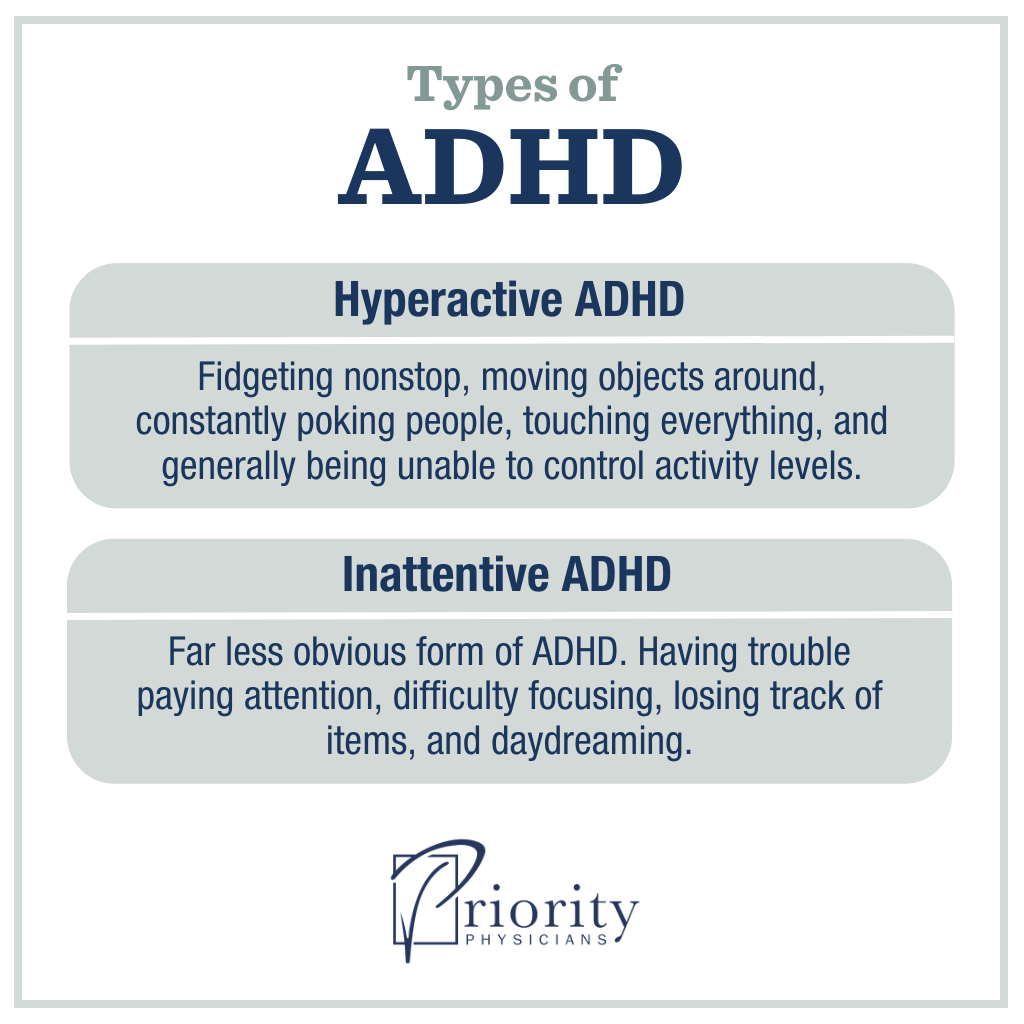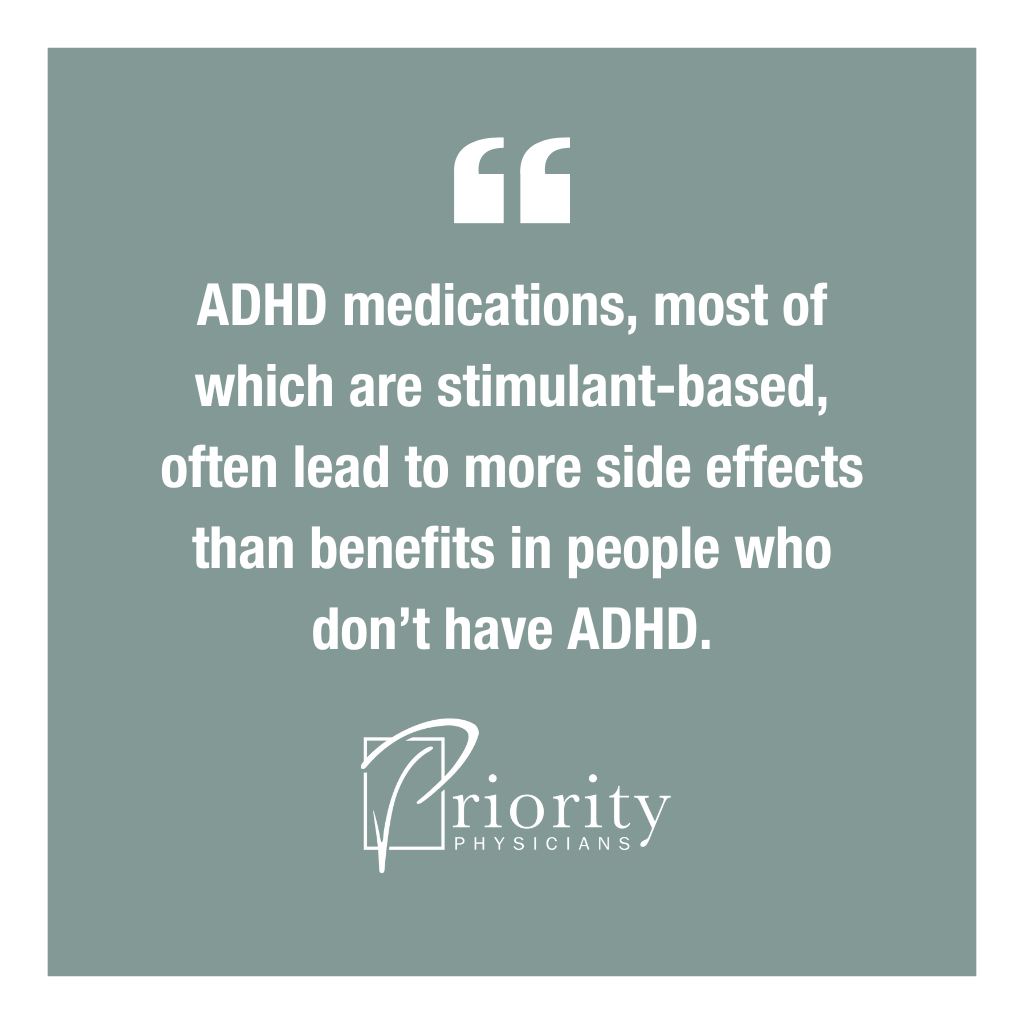Attention deficit hyperactivity disorder (ADHD) is one of the most common neurodevelopmental disorders of childhood that can persist into adulthood.
An estimated six million children between ages three and 17 have been diagnosed with ADHD in the United States. That’s nearly 10% of American children — and within that population, boys have a much higher likelihood of receiving a diagnosis, as they’re more likely to display symptomatic behaviors than girls.
As we’ll discuss below, some of the classic symptoms of ADHD are common in neurotypical people, especially those who are naturally energetic. So, how do you differentiate a high-energy child vs. ADHD?
ADHD: Symptoms and Behaviors
There are two types of ADHD: hyperactive ADHD, and inattentive ADHD. Let’s briefly explore each.
Hyperactive ADHD can look like fidgeting nonstop, moving objects around, constantly poking people, touching everything, and generally being unable to control activity levels. While hyperactive behaviors are the more obvious, “textbook” signs of ADHD and are more likely to be diagnosed, they’re not the only way ADHD can present.
Inattentive ADHD is a far less obvious form of ADHD. Having trouble paying attention, difficulty focusing, losing track of items, and daydreaming are examples of inattentive behaviors.
Hyperactivity and inattentiveness make up the two typical presentations of ADHD, but you don’t have to exhibit both types of behaviors to be diagnosed. Girls are more likely to have inattentive ADHD, which is partially why girls are diagnosed less frequently than boys. Compared to classic hyperactive behaviors, inattentive behaviors are less likely to interrupt normal social settings in a way that requires immediate attention.
By nature, all children display behaviors indicative of ADHD at some point. They bounce between ideas, struggle to formulate succinct thoughts, or are unable to sit still for extended periods of time. Even neurotypical adults can exhibit these behaviors — but there is a real contextual threshold where these behaviors become abnormal.

High-Energy Child vs. ADHD
Just like children with ADHD, neurotypical kids can become hyper-focused on details. It’s not uncommon for a normal child to take 15 minutes to get to the crux of a simple story. So what makes these behaviors unique in people with ADHD?
The big difference between a high-energy child vs. ADHD is that a neurotypical child’s high energy comes in waves. They might have high energy in only one environment, like at home or at school, and it will pass.
High-energy behaviors are much more persistent in children with ADHD. To be medically diagnosed with ADHD, the child needs to present these behaviors in at least two different environments.
To reach a diagnosis, these behaviors must also interfere with multiple spheres of life, meaning some combination of the child’s personal, family, and academic life is impacted.
In summary, if a child’s behaviors only present in one setting, or only interfere with one sphere of their life, they may not have ADHD. But if a child displays hyperactive or inattentive behaviors at home and out in public, ADHD could be present.
How to Diagnose ADHD
If you’re noticing hyperactive or inattentive behaviors across multiple spheres of life and settings, the by-the-book approach to diagnosis is to undergo testing with a doctor.
The testing usually involves a questionnaire parents fill out which speaks to behaviors at home, followed by a questionnaire filled out by someone who interacts with the child in another environment, like a teacher or a school psychologist. The questionnaire results provide objective data, and a scoring system indicates whether the child has ADHD.
However, I’ve found that asking an overwhelmed parent to complete a homework assignment isn’t always realistic, especially when they have a child at home who needs constant attention. Instead, I’ve found a more practical way to diagnose ADHD is through an in-depth conversation with the parents and a trial of the medication.
You can generally get a good sense of patient history from a parent who has insight into the child’s academic performance. If the child sounds like they could be a good candidate, a trial of quick-acting ADHD medication is often an easier way to see if further treatment is worth pursuing.
Consequences of an Incorrect ADHD Diagnosis
Correctly identifying a high-energy child vs. ADHD is extremely important. Ultimately, it’s the key to helping alleviate their symptoms.
On one hand, receiving an ADHD diagnosis without actually having the disorder (a false positive) can lead to a false sense of hope. ADHD medications, most of which are stimulant-based, often lead to more side effects than benefits in people who don’t have ADHD.
On the other hand, failing to identify ADHD in a person with the disorder (false negative) is a missed opportunity to help them. Some people have success managing ADHD by working with a therapist and learning coping skills to successfully control their symptoms, but the primary treatment for many people with ADHD is medication — which people can’t access without a prescription.

ADHD Treatment Options
Classic ADHD medications are psychostimulants like Adderall and Ritalin. These drugs are fast-acting, and most patients will know within a couple of doses whether the drug will make a difference. Each fast-acting stimulant mediation also has a long-acting version, but I’ve never found that patients have as much success with those forms.
Other options for ADHD medications fall into a class of gentler, non-stimulant medications. Drugs like Strattera and Qelbree (serotonin-norepinephrine reuptake inhibitors) and Kapvay and Intuniv (alpha-2 agonists) help many patients manage their ADHD without the use of stimulants.
In addition to working with your doctor, there are many reputable resources that can help you understand different types of ADHD medications and how they work.
However, like I mentioned earlier, medications aren’t the only option for managing ADHD symptoms. It takes a lot of work, but developing coping skills to manage ADHD symptoms is a completely viable treatment option if you’re willing to do it.
Learning tricks and forming habits to improve executive planning skills — organizing, managing time, setting goals, staying focused, etc. — can help people successfully manage their ADHD symptoms. It’s very possible to cope with ADHD without relying on medications.
Recommendations for Parents
Initially, getting an ADHD diagnosis for your child could be a relief. However, this may open up a world of concerns, all of which a qualified physician will be happy to guide you through.
An ADHD diagnosis can come with negative implications that are similar to receiving any other medical diagnosis. Being labeled with a disorder can impact a person’s perception of themselves for the rest of their life. And there is always some level of risk when prescribing controlled substances for treatment.
It may be easy to focus on the negatives of an ADHD diagnosis, but pursuing treatment can come with many positives.
Your child may not complain about their condition explicitly. They don’t know any different, and they probably believe their hyperactive or inattentive behaviors are normal. Constantly being told by others that their behaviors are wrong can be frustrating. Unrecognized and untreated ADHD can have long-term disadvantages on a psychological and physical level.
Identifying ADHD in individuals and working to address behaviors is still beneficial, even without using medications. But incorporating medications into ADHD management often causes a huge upswing in how a child views themselves and functions in the world. The right dose of medication can make a significant difference in a child’s life, and also have a tremendous positive impact on their family and friends.
There’s an overwhelming amount of information online about the downsides of pursuing ADHD treatment. But as a doctor, I’ve seen the positive effects time and again when I reach an accurate diagnosis and find an effective treatment option.
The truth is, you interact with adults who have ADHD every day. You wouldn’t know it because they’re successfully managing their symptoms with treatment, and they’re functioning normally as productive members of society. ADHD medications often do a world of good — it just isn’t obvious.
High-Energy Child vs. ADHD: Final Thoughts
It can be tough to distinguish the between the behaviors of a high-energy child vs. ADHD. If your child is displaying ADHD behaviors in a variety of settings, don’t hesitate to talk with your doctor. An accurate diagnosis is the best place to start!

